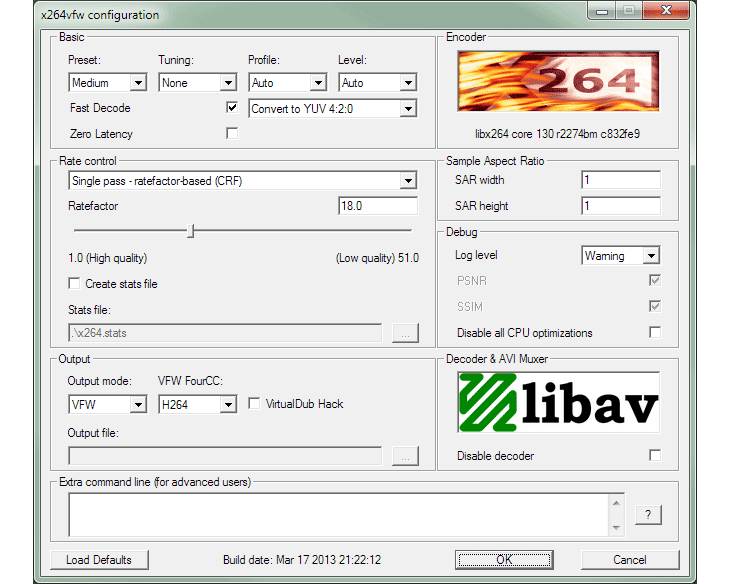

To rip our CDs, we had been using Constant Bitrate (CBR) encoding for a while, when later, Variable Bitrate (VBR) encoding came along. Many people are more familiar with rate control in audio encoders, especially those who-like me-grew up with MP3s. Note that this is not about the nitty-gritty details of Rate-Distortion Optimization. This post is a brief guide on the different modes it explains when you’d use which, as an end user. Why should you care? Often enough, you see examples of video encoding commands that apply the wrong kind of rate control mode or wrong bitrates. Rate control comes in many forms-you’ll recognize the terms “1-pass” and “2-pass”, “CBR” and “VBR”, maybe you know about “VBV Encoding” or “CRF”. Rate control is a crucial step in determining that tradeoff between size and quality. The goal of (lossy) video encoding is to save as many bits as possible, reducing the file size over the original input file, while retaining as much quality as possible. You cannot simply speed up the process or take shortcuts.What is “rate control”? It’s what a video encoder does when it decides how many bits to spend for a given frame. This is all in line with video encoding concepts, slower encoding means more quality is kept and the compression is superior. You will have to find the perfect preset for how much time you want to spend upscaling and the output quality. Using a CRF of 25 will also lower the output quality slightly (less bitrate = less size). To achieve a faster upscale use a fast preset like veryfast or superfast however these will give a poorer compression but will complete the upscaling faster ffmpeg -i input.mp4 -vf scale=3840x2560:flags=lanczos -c:v libx264 -preset veryfast -crf 25 output.mp4 ffmpeg -i input.mp4 -vf scale=3840x2560:flags=lanczos -c:v libx264 -preset slow -crf 19 output.mp4 Faster? Lanczos is a common scale algorithm to use, avoiding a blocky looking video after the upscale.

Using a slow preset will give good compression and a CRF of 19 will keep most of the original video quality. The speed of the video upscale will depend on the video length, bitrate, your CPU and what settings you use for the upscale process. How to easily upscale a 1080p video to 4k resolution using FFmpeg and a one-line command.


 0 kommentar(er)
0 kommentar(er)
